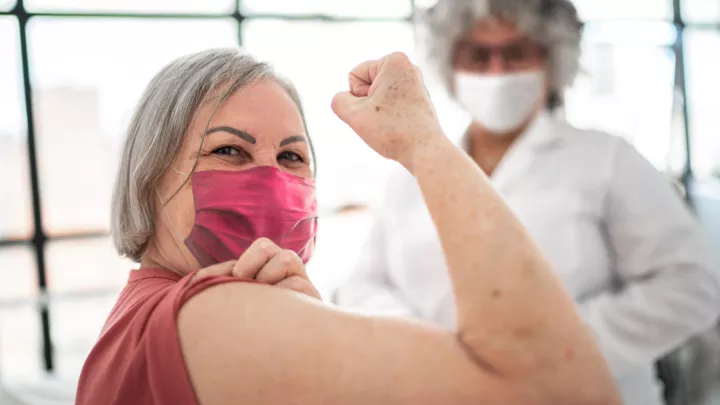
A vaccine clinical trial tests two things: whether a vaccine is safe to take and if it works. Public health experts use vaccine efficacy to compare how well a vaccine works. Here we explain efficacy, compare efficacy rates for the three authorized COVID-19 vaccines and break down the difference between efficacy and effectiveness.
What is efficacy?
"Efficacy is a number that says, under ideal conditions, how likely is something to offer protection to someone like me that was represented in the trial," says infectious diseases expert David Brett-Major, MD, MPH, who has extensive experience in vaccine development.
Efficacy can refer to different things. For example, it can refer to how likely a person is to get COVID-19. A 0% efficacy would mean that vaccinated people in the research study were as likely to get COVID-19 as unvaccinated people.
Efficacy can also refer to how protected someone is against an outcome, like severe disease, hospitalization or death. In data from trials presented to the Food and Drug Administration (FDA), vaccinated people were well protected from hospitalization and death from COVID-19, though the numbers of people with severe outcomes were small in both groups, vaccinated and unvaccinated.
COVID-19 vaccine efficacy rates
Protection from hospitalization from COVID-19
- Moderna 100%
- Pfizer: 100%
- Johnson & Johnson: 100%
Protection from COVID-19 severe disease
- Moderna 97%
- Pfizer: 100%
- Johnson & Johnson: 85%
COVID-19 vaccine efficacy rates
- Moderna 94%
- Pfizer: 95%
- Johnson & Johnson: 66% globally
Efficacy after one dose
Are Pfizer and Moderna better at preventing mild disease – or is it too soon to tell?
If you compare Johnson & Johnson's one-dose series to the mRNA two-dose series, the mRNA vaccines look better. But if comparing them head-to-head for just a single shot each, Johnson & Johnson's likely performs better than a single dose of Pfizer or Moderna. Another clinical trial is underway to see if two doses boost the efficacy of the Johnson & Johnson vaccine.
The difference between efficacy and effectiveness
Efficacy and effectiveness sound similar, but they are not the same. Efficacy refers to how well a vaccine performs under ideal conditions as reflected in a careful clinical trial. For instance, the study participants are carefully chosen and given specific instructions to reduce their risks, the vaccine doses are given at precisely the right time and subjects are monitored closely.
Effectiveness, on the other hand, refers to what happens in the real world when a vaccine is employed to protect a community, and often is discussed in terms of community-wide protection. When you get the yearly influenza shot, for instance, you may still get sick with one of several strains of flu that year. But, being vaccinated means protection against a more severe case. Likewise, if enough of your neighbors also took the flu vaccine, your ICU will not see as many influenza cases. People at higher risk may avoid the disease entirely. Vaccine effectiveness is about how protected everyone is as a whole.
"Vaccine effectiveness is what happens to the community experience with a disease," says Dr. Brett-Major. "So, on a population level, when you have a lot of vaccine uptake, it does change the community experience with a disease. Vaccines with moderate and even low efficacy can have reasonable effectiveness."
We've seen this happen with the flu. In the 2018 to 2019 flu season, vaccinations prevented an estimated:
- 4.4 million flu illnesses
- 58,000 flu hospitalizations
- 3,500 flu deaths
That flu season, the vaccine efficacy was only 29%. Low (individual) efficacy can still make a big difference for (overall) effectiveness.
If you are wondering which COVID-19 vaccine to get based on efficacy, the answer is simple: whichever vaccine you are offered. All of the authorized vaccines reduce your risk from severe disease, hospitalization and death.



